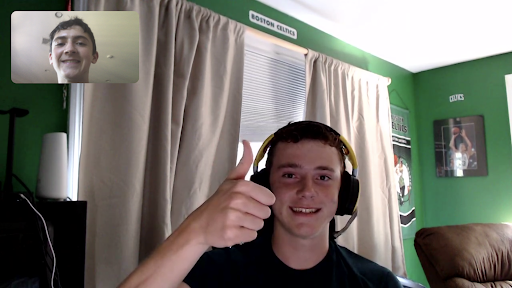Nico Stuart - Jackpine
- The Rivers School

- Aug 25, 2020
- 3 min read
Timmy and I began our Jackpine Technologies internship not by commuting to the office in Maynard, not by shaking our manager’s hand, rather by opening our laptops. Jackpine Technologies is a high-end technology company empowering organizations to create exceptional software through innovative practices, technologies, and products. The first few days of our internship consisted of a mix of training and figuring out what we needed to learn to be successful. Because Jackpine holds a GSA (General Services Administration) schedule, they frequently work with the U.S. Government. For us, this meant extra training in topics ranging from document classification to detecting a leak (traitor) in the workplace. Upon completion of these online courses, or about two days in, our project manager Shaun assigned us our first project. We would be tasked with creating a status page for some of the company's systems. This would require us to build a UI (user interface) to display different statuses while simultaneously fetching the data from Jackpine’s “status page” on Jenkins. If not already confusing enough, we would need to learn three new programming languages to make the project happen. A challenging initial task for us, especially considering the fact that it had taken us nearly the entire school year to learn Java in our AP Computer Science class.
To learn the new languages, we decided to start the same way any novice would: on youtube. However, after doing some research, Timmy spotted an eight-hour course on an educational skill-sharing website. And so we commenced our JavaScript marathon. For the next few days, Timmy and I screen shared the video while completing the various tasks assigned in the course. In total, there were more than fifty lessons that ranged from short three-minute segments to longer twelve-minute videos. After finishing the course, Timmy and I felt like our first project was much more accessible than we had thought. In addition to covering basic JavaScript, the course briefly explained HTML (HyperText Markup Language) and CSS (Cascading Style Sheets) concepts. This is important given the fact that these three languages work hand in hand.
Now, armed with this new knowledge, we hit another roadblock: what would the webpage look like? Thankfully, Shaun came to the rescue, showing us how to use the web page development resource called Figma. Figma is like an art/paint app for website development. Preset buttons, windows, and other features enabled us efficiently to craft and make changes to our ideas. To make our page easy to read from far away, we decided to use traffic lights to display the various statuses. After all, traffic lights were built with readability in mind. With our design complete, next we could begin our translation to code. Utilizing CSS and HTML, we created our first traffic light. This draft traffic light couldn’t change colors and was only one of the seven we would need. Throughout the rest of the project, there were many little bugs we had to fix. As we found in Computer Science during the past year, no matter how complicated the problem, perseverance was the most important element in our ability to find a solution and finish the project.

In hindsight, there are many things that I wouldn’t have expected during the internship. For one, our manager Shaun was much more available and approachable than I had expected him to be. Shaun was our manager, but he was also a senior engineer at the company. Despite his busy job, he consistently reached out to us, allowing us to schedule meetings and teaching us whenever possible. A clear example of this was in SCRUM, the all-company meeting held every morning at 9:00 am to discuss progress and schedules. Due to our position as interns, we were never asked to report on our current status during the SCRUM meetings. Toward the end of our internship, however, Shaun wanted us to have the opportunity to explain “where we were” with our project to him and the company’s intern group, a sort of practice SCRUM presentation. Timmy and I felt even more like we were a part of the company thanks to this minor outreach by our manager. From the many skills I picked up along the way, to Timmy’s valuable teamwork during the project, I am well aware of how valuable the internship was to me. Now having a clearer understanding of the potential day to day work life of a software engineer, I am able to further consider a career in the computer science field.
I am grateful for having had the opportunity to work at a company like Jackpine. Special thanks to Mr. Schlenker, Shaun Tarves, Peter Walsh, and the many others who helped make the internship happen.







Comments